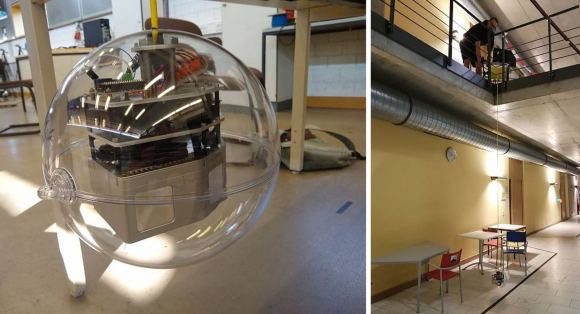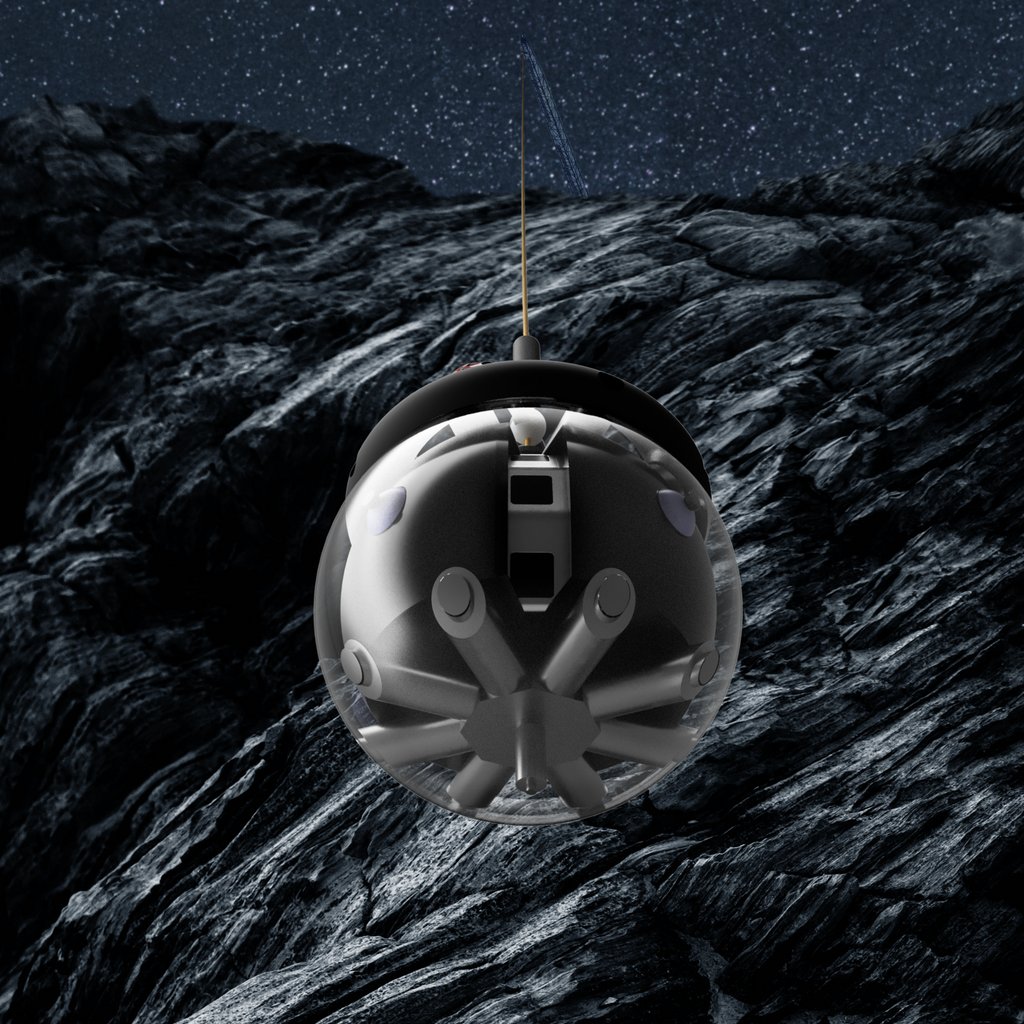Lava tubes on the moon are some of the most interesting, and difficult, places to explore in the solar system. But if humanity plans to eventually have a permanent presence on the moon, the more knowledge we have about the cave systems created by those lava tubes the better.
That’s why ESA’s current focus on lunar cave exploration is so important, and another good reason to take note when it releases more information about some of the technologies leading that push. Recently, it released an update on a project known as DAEDALUS, led by Julius-Maximilians-Universität of Würzburg (JMU), with interesting new insights into the sphere shaped autonomous robot.
In an inspired bit of space naming, DAEDALUS stands for the Descent And Exploration in Deep Autonomy of Lunar Underground Structures. It’s mission, simply put, is to descend into a lunar cave, and then roll around inside of it.

Credit: University of Würzburg
Current mission plans call for two major steps. First the sphere is lowered into a lava tube via a crane on the lunar surface. While descending, the sphere will use its instrumentation to map out and avoid obstacles that may hinder its progress. Once it reaches the floor of the lava tube’s skylight, the sphere will detach from the tether and begin an autonomous exploration mission of as much of the cave as it can manage.
The tether itself will remain stationary at the drop-off point, and act as a WiFi repeater for the autonomous sphere’s data, boosting it back to a control center. Meanwhile, the sphere will use its plethora of onboard equipment to better understand the environment inside the caves.
That equipment includes a variety of active and passive modules. Temperature sensors and a dosimeter will monitor temperature and radiation levels. A stereoscopic camera and LIDAR system will help to map the cave’s interior. And an extendable robotic arm will serve two purposes – first to move obstacles out of the way, but also to sample any particularly interesting rocks or materials the sphere finds.
Measuring at a mere 46 cm diameter, the sphere itself will not be particularly big, which serves as an advantage when being launched into space. Before it gets its chance to launch though, many more trials await it. The consortium led by JMU is participating in an Open Space Innovation Platform call that we covered a few weeks ago.

Credit: University of Würzburg
The DAEDALUS concept is currently being reviewed alongside other lava tube exploration missions. While its not clear which of those missions will be given the go-ahead for the next stage of development, the fact that ESA is putting time and effort into seriously studying an ambitious project such as DAEDALUS points to potentially big things in the program’s future.
Learn More:
ESA – Lunar Cave Explorer
JMU – DAEDALUS – Descent And Exploration in Deep Autonomy of Lava Underground Structures
New Atlas – Spherical spelunker robot designed to roll around in lunar caves
Lead Image:
The DAEDALUS Sphere is depicted descending into a Lunar lava tube.
Credit: Julius-Maximilians-University


It would be interesting to make radiation proof housing on moon or mars by using a smaller, modified version of Mr. Musks boring machine. Drop that into a lava tube for increase in living space or a tunnel to the next nearest lave tube. Don’t know if the regolith is strong enough to hold form for this.